As an Amazon Associate, I earn from qualifying purchases.
Page Contents
ToggleIntroduction
What is a Vault Toilet?
A vault toilet is a type of dry toilet that utilizes an underground storage vault for waste containment. Unlike traditional flush toilets, which rely on water-based systems for waste disposal, vault toilets are designed to minimize water usage and provide an eco-friendly sanitation solution. These self-contained units are commonly found in outdoor recreational areas, such as national parks, campgrounds, and hiking trails, where access to plumbing systems may be limited.
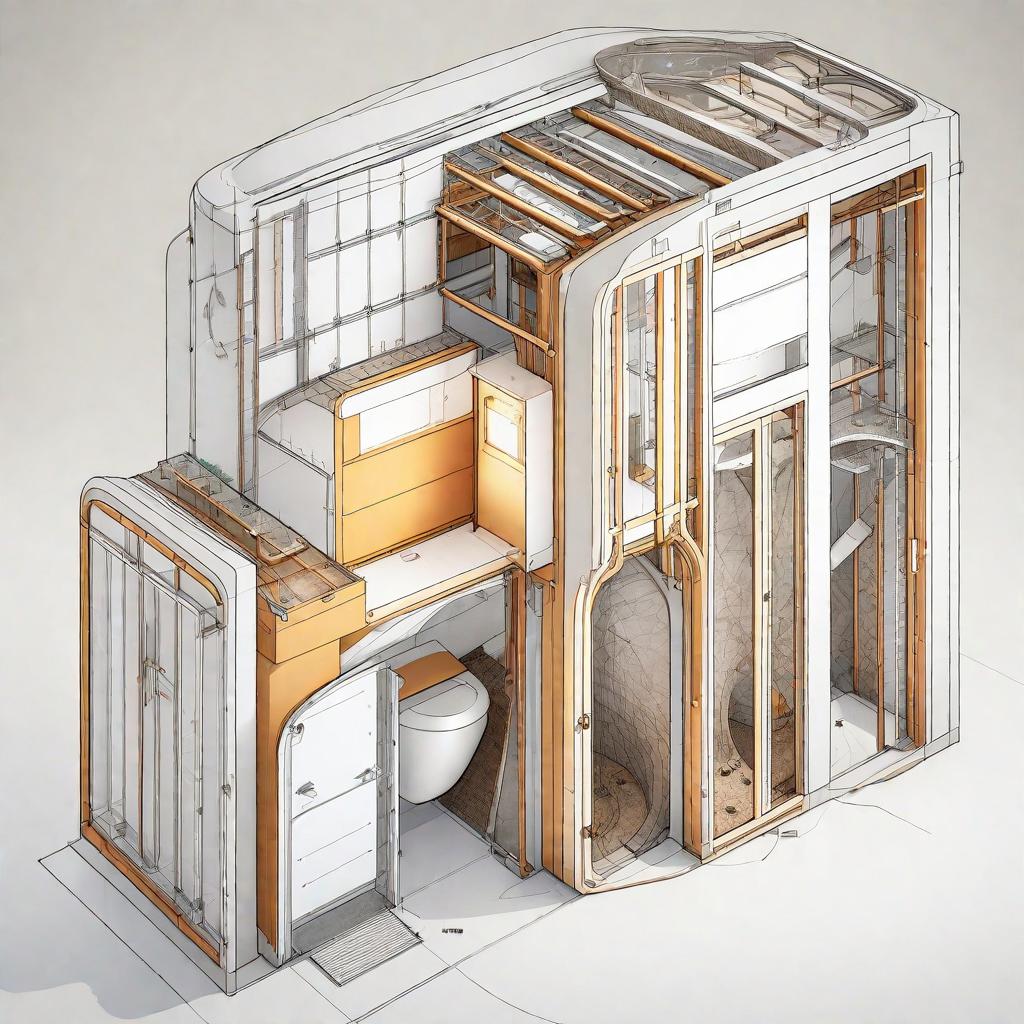
Historical Evolution
The concept of vault toilets dates back centuries, with ancient civilizations utilizing various methods to manage human waste. From rudimentary pit latrines to more sophisticated trench-style toilets, humans have always sought effective ways to dispose of waste in a sanitary manner. However, it was not until the 20th century that vault toilets as we know them today began to emerge. The development of lightweight, durable materials and advancements in ventilation systems revolutionized the field of outdoor sanitation, leading to the widespread adoption of vault toilets in natural environments.
The Mechanics of Vault Toilets
Structural Components
Vault toilets consist of two primary structural components: the superstructure and the substructure.
- Superstructure
The superstructure of a vault toilet encompasses the visible elements that users interact with. This typically includes the toilet bowl, seat, and enclosure. The materials used in the construction of the superstructure should be robust enough to withstand harsh outdoor conditions while remaining aesthetically pleasing. Common materials include stainless steel, fiberglass, or high-density polyethylene.
- Substructure
The substructure of a vault toilet refers to the underground vault that houses the waste. It is constructed using durable and impermeable materials to prevent the leaching of contaminants into the surrounding soil and water sources. The design of the substructure may vary depending on the specific type of vault toilet, such as single-pit or double-pit designs.
Ventilation Systems
Proper ventilation is crucial for maintaining a sanitary and odor-free environment within vault toilets. There are two main types of ventilation systems commonly used:
- Passive Ventilation
Passive ventilation relies on natural airflow to remove odors and maintain sanitary conditions within the toilet. This is achieved through the strategic placement of vents and air vents, which allow fresh air to enter the toilet and facilitate the release of odorous gases. The design of the superstructure and the positioning of vents play a key role in maximizing the effectiveness of passive ventilation.
- Active Ventilation
Active ventilation systems utilize mechanical mechanisms to enhance air circulation and odor control. This typically involves the use of fans or blowers that actively draw air out of the toilet, creating negative pressure and preventing odors from permeating the space. Active ventilation systems can be particularly beneficial in areas with high usage or during peak seasons when odor control is of utmost importance.
Benefits of Vault Toilets
Vault toilets offer numerous benefits, both from an environmental and cost-efficiency standpoint.
Environmental Impact
- Waste Management
One of the key environmental advantages of vault toilets is their efficient waste management system. By storing waste in underground vaults, these toilets help prevent contamination of natural water sources, such as rivers and lakes. The waste undergoes a natural decomposition process within the vault, leading to nutrient-rich compost that can be safely reintroduced into the ecosystem.
- Ecosystem Preservation
Vault toilets also contribute to the preservation of fragile ecosystems by minimizing human impact. The absence of water-based flushing systems reduces the risk of introducing harmful pollutants into the environment, thereby safeguarding the flora and fauna that rely on these natural habitats.

Cost-Efficiency
- Initial Installation
Compared to conventional flush toilets, vault toilets offer a cost-effective solution for sanitation needs, especially in remote areas. The absence of complex plumbing systems and water connections significantly reduces installation costs, making them a viable option for public agencies and organizations with limited budgets.
- Maintenance Expenses
Vault toilets generally require minimal maintenance compared to conventional flush toilets. Routine cleaning procedures, such as emptying the vaults and sanitizing the superstructures, can be easily performed by trained personnel. The simple design and durable materials used in the construction of vault toilets minimize repair and replacement costs, resulting in long-term cost savings.
Types of Vault Toilets
There are two main types of vault toilets: single-pit and double-pit designs. Each design offers unique advantages depending on the specific use case and location requirements.
Single-Pit Design
Operation Mechanism
Single-pit vault toilets utilize a single underground pit for waste containment. As waste fills up the pit, a removable chamber is used to access and remove the waste for proper disposal. Once the pit is emptied, the chamber is reinserted, and the toilet is ready for continued use.
Applicability
Single-pit vault toilets are commonly used in areas with lower usage rates and where relocation or expansion is feasible. These toilets are ideal for remote campsites, hiking trails, and other outdoor recreational areas where access to plumbing systems may be limited.
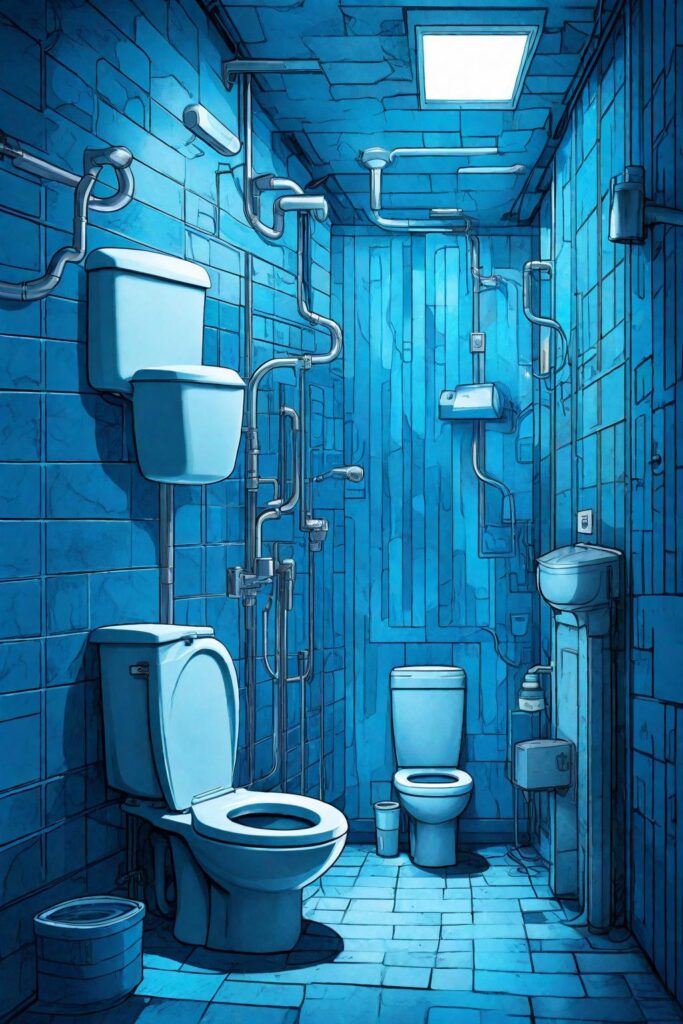
Double-Pit Design
- Functionality
Double-pit vault toilets operate on a rotational basis, utilizing two separate underground pits. One pit is active at a time, while the other undergoes a resting period for waste decomposition. The use of two pits ensures continuous operation without the need to relocate or empty the vault frequently.
- Comparative Advantages
The double-pit design offers several advantages over single-pit vault toilets. The resting period allows for the natural decomposition of waste, resulting in a reduced odor and improved overall sanitation. Additionally, the rotational system increases the longevity of the toilet, as each pit can be used alternately. This design is particularly suitable for high-traffic areas, such as campgrounds and parks, where a constant supply of functional toilets is essential.
Vault Toilet vs. Pit Toilet
While both vault toilets and pit toilets are commonly used in outdoor settings, several key differences set them apart.
Vault Toilet:
Construction: Vault toilets are typically permanent structures with a concrete or steel container (the vault) installed underground. The vault is designed to contain waste until it can be properly pumped out and disposed of.
Amenities: Many vault toilets are equipped with basic amenities such as toilet paper, hand sanitizer dispensers, and proper ventilation systems to minimize odors.
Maintenance: Regular maintenance is essential for vault toilets. They require periodic pumping to remove accumulated waste. Proper ventilation and cleaning are necessary to ensure a sanitary and pleasant experience for users.
Environmental Impact: Vault toilets are considered more environmentally friendly than pit toilets. The contained waste is easier to manage and dispose of properly, reducing the risk of contamination to nearby water sources.
Pit Toilet:
Construction: Pit toilets, also known as pit latrines, are simpler in design. They consist of a hole dug into the ground, lined with various materials such as concrete rings or wood. The waste goes directly into the pit.
Amenities: Pit toilets are usually more basic, with minimal amenities. Users may need to bring their own toilet paper and hand sanitizer.
Maintenance: Pit toilets require less maintenance than vault toilets. However, they do need occasional emptying or closure when the pit is full. Proper waste disposal is crucial to prevent groundwater contamination.
Environmental Impact: Pit toilets have a higher environmental impact compared to vault toilets. Improperly managed pit toilets can lead to groundwater pollution and pose risks to human health and the ecosystem.
Considerations for Outdoor Enthusiasts:
Location: The choice between a vault toilet and a pit toilet may depend on the location. In more remote areas, pit toilets may be more practical due to the simplicity of construction and maintenance.
Regulations: Outdoor enthusiasts should be aware of local regulations and guidelines regarding toilet facilities. Some areas may have specific requirements to minimize environmental impact.
Personal Responsibility: Regardless of the type of toilet available, users should practice Leave No Trace principles. This includes proper waste disposal, minimizing impact on the environment, and respecting the natural surroundings.
Innovations in Vault Toilet Technology
Advancements in technology have paved the way for exciting developments in vault toilet systems, enabling greater efficiency and convenience.
Solar-Powered Solutions
- Energy Harvesting
Solar-powered vault toilets leverage renewable energy sources to power ventilation systems and other electrical components. Solar panels are integrated into the superstructure, allowing for efficient energy harvesting and reducing reliance on external power sources.
- Off-Grid Functionality
One of the key advantages of solar-powered vault toilets is their off-grid functionality. This means that even in remote locations where access to electricity is limited, these toilets can remain operational, providing essential sanitation services to users without the need for extensive infrastructure developments.

Smart Monitoring Systems
- Usage Tracking
Smart monitoring systems equipped with sensors and data collection capabilities provide valuable insights into toilet usage patterns. Real-time data on usage frequency and peak hours allow for efficient maintenance scheduling, waste management, and resource allocation.
- Maintenance Alerts
Smart monitoring systems also enable proactive maintenance through automated alerts. By continuously monitoring vital components, such as ventilation systems and waste levels, these systems can provide early warnings for potential malfunctions or maintenance requirements, ensuring timely repairs and minimizing disruptions.
Installation and Maintenance Best Practices
Proper installation and maintenance practices are essential for ensuring the optimal performance and longevity of vault toilets.
Site Selection
- Environmental Impact Assessment
Before installing a vault toilet, conducting an environmental impact assessment is crucial to determine its suitability for the specific location. Factors such as soil composition, proximity to water sources, and local regulations must be taken into account to prevent potential contamination risks.
- Accessibility Considerations
When selecting a site for a vault toilet, accessibility is a key consideration. The toilet
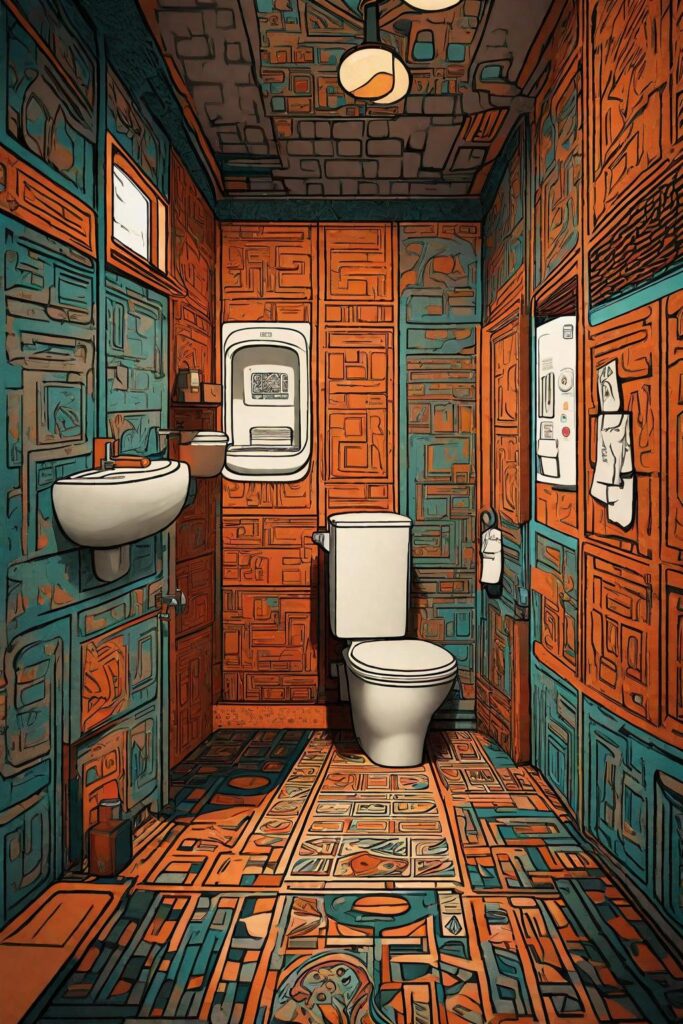
should be located in a central area that is easily reachable for users, including individuals with disabilities. Access pathways and appropriate signage should be incorporated to ensure inclusivity and compliance with accessibility guidelines.
Routine Maintenance
- Cleaning Procedures
Routine cleaning of vault toilets is essential to maintain hygiene and prevent odors. Cleaning procedures should include emptying the vaults, sanitizing the superstructure, and replenishing supplies such as toilet paper and hand sanitizers. Thorough cleaning should be conducted on a regular schedule, depending on usage rates and environmental conditions.
- Inspection Protocols
Regular inspections are necessary to identify and address potential maintenance issues promptly. Inspections should encompass all components of the vault toilet, including the superstructure, ventilation systems, and waste storage vaults. Any signs of damage, wear and tear, or malfunctioning equipment should be assessed and repaired promptly to ensure uninterrupted functionality.
Cultural Perspectives on Vault Toilets
Vault toilets have cultural significance and vary in their historical contexts and global adoption.
Indigenous Practices
- Historical Context
Indigenous communities have long practiced sustainable and environmentally friendly methods of waste management. Their ingenious use of natural materials and knowledge of local ecosystems have contributed to the development of innovative sanitation practices that align with the principles of vault toilets.
- Cultural Significance
For indigenous communities, vault toilets represent more than just a sanitation solution. They symbolize a deep connection with nature and a commitment to preserving the environment for future generations. The incorporation of traditional elements and cultural practices within modern-day vault toilet designs honors these rich cultural heritages while promoting sustainable sanitation practices.
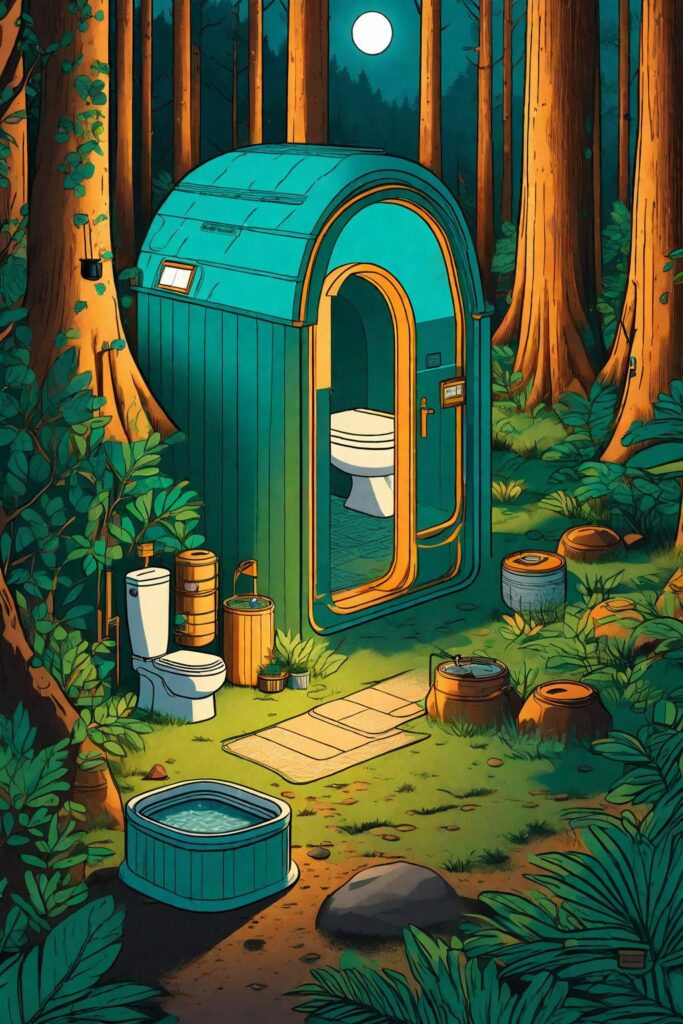
Global Adoption
- Success Stories
Vault toilets have gained recognition and acceptance in various parts of the world, with many success stories highlighting their effectiveness. Countries like Sweden, Canada, and New Zealand have embraced vault toilets as a sustainable and cost-efficient solution, particularly in rural and remote areas. These success stories serve as a testament to the versatility and efficacy of vault toilet technology.
- Challenges Faced
Despite the success of vault toilets, several challenges hinder their widespread adoption. Limited awareness and understanding of the benefits of vault toilets, lack of funding for infrastructure development, and cultural beliefs surrounding sanitation practices are some of the hurdles that need to be addressed. Collaborative efforts involving government agencies, NGOs, and local communities are essential to overcome these challenges and ensure the successful implementation of vault toilet initiatives.
Vault Toilet Camping
- What is Vault Toilet Camping?
Vault toilet camping refers to camping experiences that utilize vault toilets for sanitation needs. These toilets are commonly found in designated camping areas, providing campers with a convenient and environmentally friendly alternative to pit toilets or chemical-based portable toilets.
- Is it Eco-friendly?
Vault toilet camping offers several eco-friendly advantages. By using vault toilets, campers minimize their impact on the environment by reducing water usage and preventing contamination of local ecosystems. Additionally, the composting process within vault toilet vaults facilitates natural waste decomposition, contributing to a more sustainable camping experience overall.
Regulatory Compliance
Vault toilets must adhere to various health and safety standards to ensure proper waste disposal and provide inclusive access for all individuals.
Health and Safety Standards
Waste Disposal Regulations
Vault toilets must comply with local waste disposal regulations to ensure the safe handling and management of waste. These regulations often dictate the frequency of waste removal, methods for proper disposal, and any additional treatment requirements before reintroducing waste into the environment.
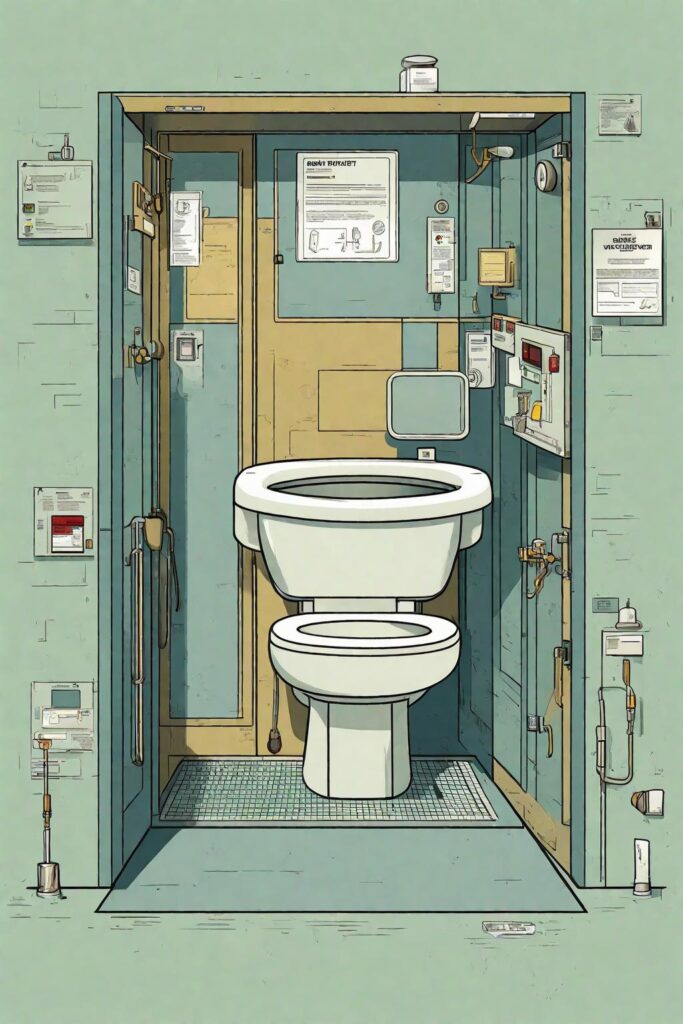
Accessibility Guidelines
To promote inclusivity, vault toilets must meet accessibility guidelines outlined by relevant authorities. These guidelines ensure that the toilets are accessible to individuals with disabilities, providing features such as wheelchair accessibility, grab bars, and visual aids.
Permits and Approvals
Local Authorities
Before installing a vault toilet, obtaining the necessary permits and approvals from local authorities is crucial. These permits ensure compliance with regulations related to waste management, environmental impact, and safety practices. Engaging in discussions with local authorities will also help foster collaboration and ensure that the installation process aligns with community needs and expectations.
Environmental Agencies
In certain regions, approval from environmental agencies may be required to assess the potential impacts of vault toilets and ensure compliance with relevant environmental standards. These agencies evaluate factors such as proximity to sensitive ecosystems, water sources, and the long-term sustainability of waste management practices.
Case Studies
Real-world implementations of vault toilets provide valuable insights into their practicality and effectiveness.
National Park Implementations
Yosemite National Park
Yosemite National Park in California has successfully integrated vault toilets into its recreational areas, preserving the natural beauty of the park while providing essential sanitation facilities for visitors. The utilization of vault toilets has significantly reduced water consumption and helped maintain the fragile ecosystem of the park.
Yellowstone National Park
Yellowstone National Park, known for its geothermal features and pristine landscapes, has implemented vault toilets in various locations throughout the park. These toilets not only minimize environmental impact but also ensure that visitors can enjoy their experience with minimal disruption to the ecosystem.
Community Initiatives
Sustainable Sanitation Programs
Community-led initiatives focused on sustainable sanitation have seen great success in implementing vault toilets in rural and underserved areas. These programs provide education on the benefits of vault toilets and work closely with local communities to ensure their active participation in maintaining and managing these facilities.
Public Reception
The reception and acceptance of vault toilets by the public have been largely positive. Users appreciate the eco-friendly features, cost-efficiency, and convenience that vault toilets offer, providing them with hygienic sanitation facilities in areas that lack traditional infrastructure.
Future Trends in Vault Toilet Technology
As the demand for efficient and eco-friendly sanitation solutions continues to grow, the future of vault toilets is ripe with exciting advancements. This section explores two key areas of development: advancements in materials and integration with smart cities.
A. Advancements in Materials
Sustainable Construction
To reduce environmental impact, the latest vault toilets are harnessing sustainable construction materials. Manufacturers are replacing traditional materials, such as concrete and steel, with eco-friendly alternatives. One such material gaining popularity is recycled plastic. By using recycled plastic in the construction of vault toilets, manufacturers not only reduce waste but also provide a durable and long-lasting solution.

Durability Improvements
To ensure the longevity of vault toilets, researchers are continuously exploring ways to improve durability. One innovative approach is the integration of self-healing materials. These materials can repair minor damages, such as cracks or small holes, on their own. By incorporating self-healing materials into vault toilets, maintenance efforts can be minimized, prolonging the lifespan of these facilities.
B. Integration with Smart Cities
Internet of Things (IoT) Integration
The rise of smart cities presents a unique opportunity for the integration of vault toilets into urban infrastructures. IoT technology can be leveraged to develop smart vault toilets that offer real-time monitoring and maintenance capabilities. For instance, sensors can be installed to detect the level of waste, ensuring timely emptying of the vaults. Additionally, IoT technology can also assist in predicting usage patterns, optimizing resource allocation, and improving overall efficiency.
Data-Driven Decision Making
Vault toilets integrated with IoT technology not only provide valuable data on usage patterns but also contribute to data-driven decision-making processes. By analyzing the data collected, city planners and sanitation authorities can better understand the demand for sanitation facilities and allocate resources accordingly. This data-driven approach ensures that vault toilets are strategically placed in areas with high footfall, leading to improved accessibility and user satisfaction.
Challenges and Solutions
While vault toilets offer a wide range of benefits, they do come with some challenges. This section explores two significant challenges associated with vault toilets: odor control and public perception, as well as a hypothetical scenario of a person getting stuck in a vault toilet.
A. Odor Control
Ventilation Strategies
Keeping vault toilets odor-free is of utmost importance to ensure user comfort. Advanced ventilation strategies are being employed to address this challenge. Mechanisms such as wind-driven ventilation systems and solar-powered fans are being integrated into vault toilets to facilitate airflow and minimize odors. Additionally, some vault toilets now feature odor-blocking materials that trap and neutralize unpleasant smells.
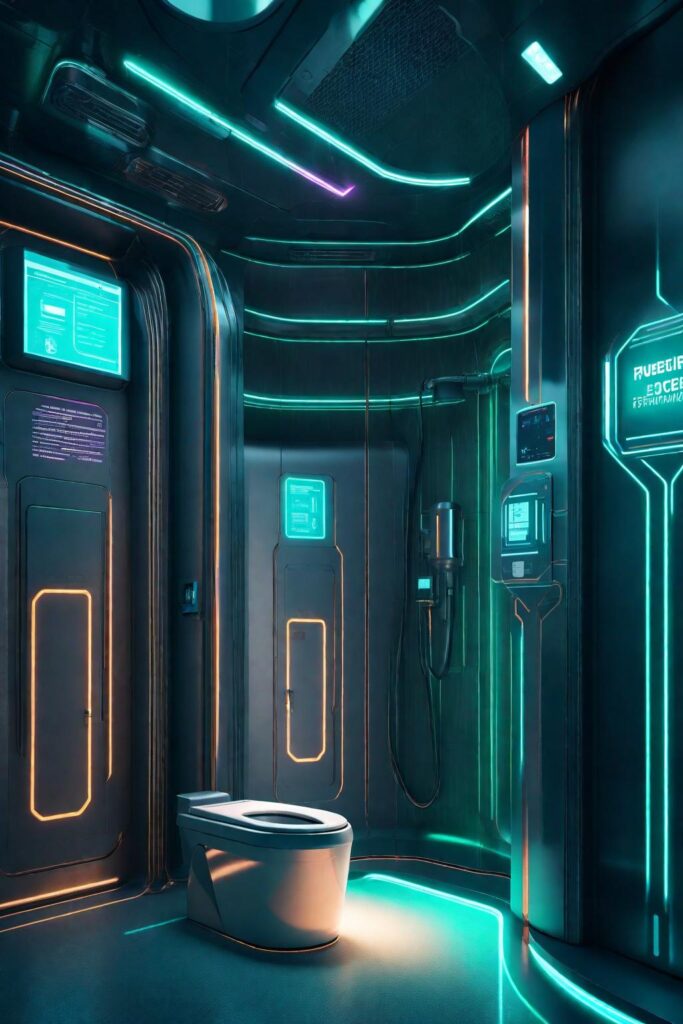
Eco-Friendly Deodorizers
Traditionally, deodorizers used in vault toilets contained harmful chemicals that posed a threat to the environment. However, researchers and manufacturers are now developing eco-friendly deodorizers made from natural ingredients. These deodorizers not only keep vault toilets fresh but also contribute to sustainability efforts by reducing the release of harmful substances into the environment.
B. Public Perception
Education Campaigns
Public perception plays a crucial role in the success of any sanitation solution. To overcome negative perceptions surrounding vault toilets, educational campaigns can be launched to raise awareness about the design, functionality, and benefits of these facilities. By providing accurate information and dispelling misconceptions, these campaigns help foster a positive perception and encourage public acceptance.
Community Engagement
Engaging the local community in the decision-making process can significantly impact the acceptance and success of vault toilets. Public consultations, town hall meetings, and the involvement of community leaders can ensure that the concerns and preferences of the community are taken into account. This approach fosters a sense of ownership and pride, leading to better utilization and maintenance of vault toilet facilities.
C. What to do when a man is stuck in a vault toilet
While rare, instances of individuals becoming stuck in vault toilets can occur. In such situations, prompt action must be taken to ensure the person’s safety. The following steps can be followed:
Assess the situation: Determine whether the person is conscious and responsive. If they are, try to establish clear communication and assess their physical state to provide appropriate assistance.
Contact emergency services: If the person is unable to free themselves or is in distress, immediately contact local emergency services for professional assistance. Give them precise details regarding the whereabouts and characteristics of the situation.
Provide temporary comfort: While waiting for help to arrive, reassure the individual and offer any necessary comfort measures, such as water or a blanket. Remain by their side and provide emotional support until professional help arrives.
Success Metrics
To evaluate the effectiveness of vault toilets, success metrics are essential. This section examines two key metrics: environmental impact assessments and user satisfaction surveys.
A. Environmental Impact Assessments
Reduction in Water Usage
One of the significant benefits of vault toilets is their ability to minimize water consumption. Environmental impact assessments can quantify the amount of water saved by using vault toilets instead of traditional flush toilets. By comparing these figures, policymakers and environmentalists can determine the extent of the positive impact on water conservation.
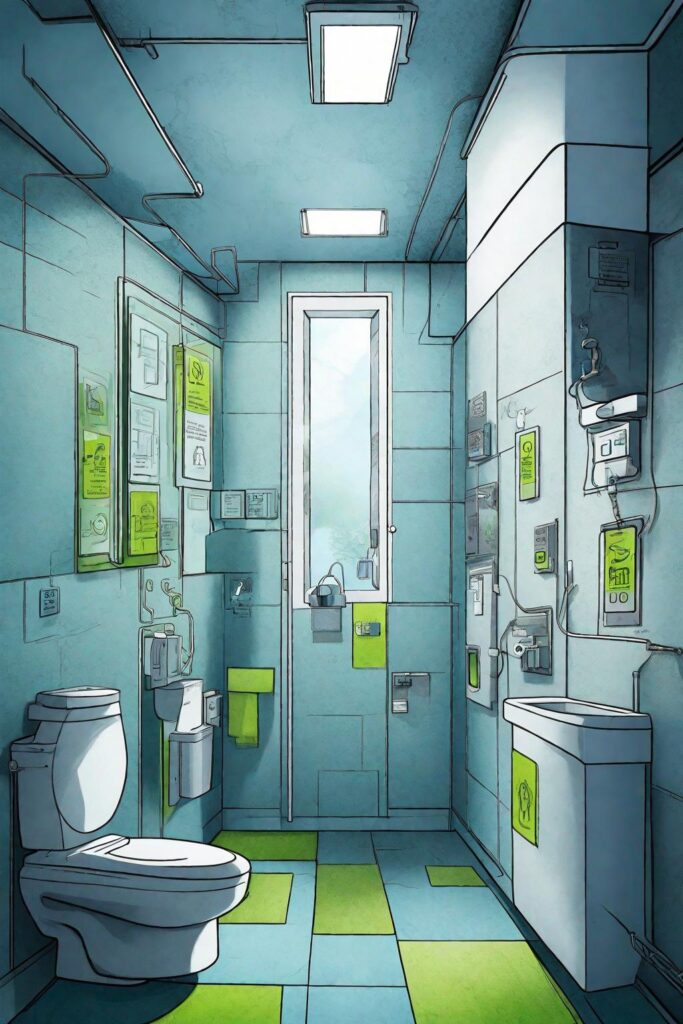
Waste Decomposition Rates
Another critical aspect to consider in environmental impact assessments is the rate at which waste decomposes in vault toilets. By analyzing decomposition rates, researchers gain insights into the efficiency of the decomposition process and the potential for valuable byproducts, such as compost, to be generated. These assessments contribute to ongoing efforts to build sustainable waste management systems.
B. User Satisfaction Surveys
Accessibility Ratings
User satisfaction surveys help gauge the accessibility of vault toilets. By gathering feedback from users, sanitation authorities can assess whether the design, location, and facilities of vault toilets meet the needs of diverse user groups. This data can guide future improvements and ensure that vault toilets fulfill their purpose of providing accessible sanitation solutions for everyone.
Maintenance Feedback
Regular maintenance is crucial to the functionality and user experience of vault toilets. User satisfaction surveys provide an avenue for users to provide feedback on the cleanliness, maintenance, and overall condition of these facilities. With the insights gained from these surveys, maintenance protocols can be refined and optimized to deliver a higher level of user satisfaction.
Vault Toilets in Disaster Relief
Vault toilets have proven to be invaluable in disaster relief scenarios. This section explores two key aspects of their utilization: quick deployment and humanitarian partnerships.
A. Quick Deployment
Portable Options
In emergencies, the quick and efficient deployment of sanitation facilities is critical. Portable vault toilets offer a practical solution as they can be rapidly transported and installed in disaster-stricken areas. These portable options ensure that affected communities have access to much-needed sanitation facilities, promoting public health and hygiene.
Emergency Response Coordination
The successful deployment of vault toilets in disaster relief relies on effective emergency response coordination. When disaster strikes, agencies, organizations, and local authorities must work together to identify the specific sanitation needs of affected areas and ensure the timely delivery and installation of vault toilets. Collaboration and coordination enable prompt disaster relief efforts and minimize the impact on public health.
B. Humanitarian Partnerships
Collaborations with NGOs
Humanitarian partnerships between vault toilet manufacturers and non-governmental organizations (NGOs) play a crucial role in disaster relief efforts. These collaborations ensure the availability of necessary resources and expertise to address sanitation challenges in disaster-hit areas. By combining forces, NGOs and manufacturers can provide integrated solutions, including the installation, maintenance, and monitoring of vault toilets.
Global Emergency Preparedness
Vault toilets are also integral to global emergency preparedness initiatives. Given the unpredictable nature of disasters, comprehensive emergency plans that include sanitation provisions are essential. Through partnerships between governments, aid agencies, and organizations specializing in disaster preparedness, the global community can work together to develop and implement strategies that incorporate the use of vault toilets as a key component of emergency response systems.
Summary
After exploring future trends, challenges, success metrics, and the role of vault toilets in disaster relief, it is clear that these sanitation solutions offer numerous advantages. This section provides a concise summary of the key takeaways and practical implementation insights.
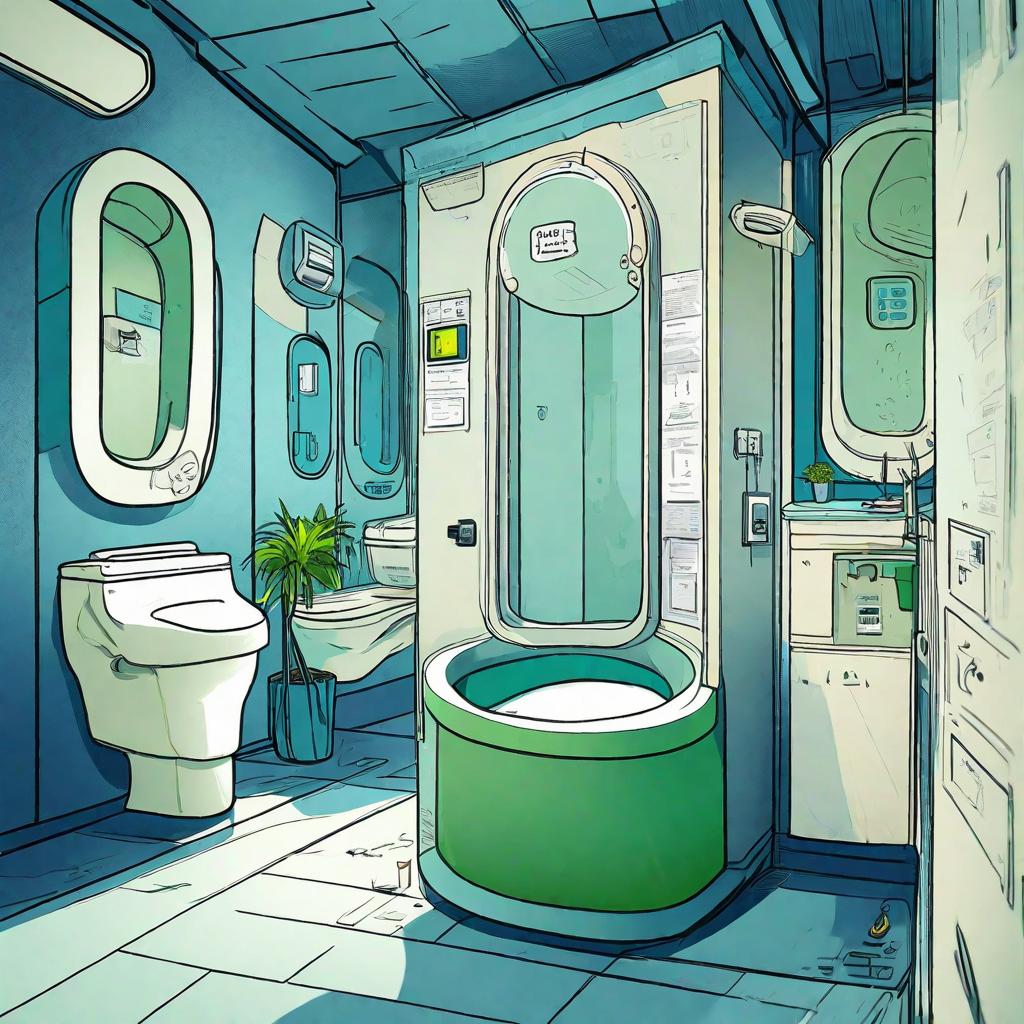
A. Key Takeaways
Environmental Advantages
Vault toilets provide significant environmental advantages, including reduced water usage, sustainable construction materials, and efficient waste decomposition. These factors contribute to long-term sustainability and support global efforts towards responsible resource management.
Practical Implementation Insights
To successfully implement vault toilets, it is essential to address challenges such as odor control and public perception. This requires the use of innovative strategies, including ventilation systems, eco-friendly deodorizers, education campaigns, and community engagement. Additionally, future trends in vault toilet technology, such as IoT integration and advancements in materials, should be embraced to enhance efficiency and overall user satisfaction.
FAQs (Frequently Asked Questions)
To address common queries and provide additional information, this section presents a compilation of frequently asked questions about vault toilets.
A. Are Vault Toilets Odor-Free?
While efforts are made to control odors in vault toilets, complete odor elimination can be challenging. However, advanced ventilation strategies and the use of eco-friendly deodorizers significantly reduce unpleasant smells, ensuring a more pleasant user experience.
B. How Do Vault Toilets Benefit the Environment?
Vault toilets benefit the environment in multiple ways. They minimize water usage compared to flush toilets, conserve natural resources through the use of sustainable construction materials, and contribute to waste management by facilitating efficient decomposition.
C. Can Vault Toilets Be Installed Anywhere?
Vault toilets can be installed in various settings, including public parks, campgrounds, and remote areas without water or sewer connections, making them a versatile solution. However, local regulations and infrastructure requirements should be considered before installation.
D. What Are the Maintenance Requirements?
Regular maintenance is essential for the optimal performance of vault toilets. This includes periodic pumping of vaults, restocking of toilet paper and hand sanitizers, and ensuring proper ventilation systems. Maintenance schedules should be established based on usage patterns and local regulations.
E. How do they empty vault toilets?
Vault toilets are typically emptied by specialized service providers or park personnel trained for waste management. The process involves pumping out the contents of the vault using vacuum trucks or similar equipment. The waste is then transported to a wastewater treatment facility for proper disposal or processing.
F. What is a flush vault?
A flush vault toilet is a type of sanitation facility that combines the simplicity of a vault toilet with a flushing mechanism. Unlike traditional vault toilets, a flush vault utilizes a water-based flushing system to move waste from the bowl into the vault below. This can enhance user comfort and maintain a cleaner environment within the facility.
G. What is a double vault toilet?
A double vault toilet consists of two separate compartments or vaults within the same structure. The purpose of having two vaults is to allow one side to decompose and settle while the other is in use. This design helps to manage waste more effectively, promote decomposition, and extend the lifespan of the facility before maintenance is required.
H. Do vault toilets smell?
Properly designed and maintained vault toilets should not produce strong or unpleasant odors. The key to minimizing odors is regular servicing and ensuring that the vault is adequately sealed to prevent the escape of gases. The use of ventilation systems and odor-neutralizing agents can also contribute to a more pleasant user experience.
I. Vault toilet installation?
Vault toilet installation involves several key steps. First, a suitable location is selected, taking into account factors such as accessibility, environmental impact, and user convenience. The vault is then installed, often with proper sealing to prevent groundwater contamination. Finally, the superstructure, including the toilet facility and any additional amenities, is constructed.
J. Vault toilet design?
Vault toilet design encompasses various elements, including the structure, ventilation system, seating arrangement, and accessibility features. The design should prioritize user comfort, durability, and ease of maintenance. Additionally, considerations for environmental impact and compliance with local regulations are essential aspects of the design process.
K. Vault toilet cost?
The cost of a vault toilet can vary based on factors such as design complexity, materials used, installation requirements, and regional labor costs. Generally, vault toilets are a cost-effective sanitation solution compared to more elaborate sewage systems. Local contractors and authorities can provide specific cost estimates based on individual project needs and specifications.
Conclusion
Through exploring the future, challenges, success metrics, and applications in disaster relief, it is evident that vault toilets are efficient and eco-friendly sanitation solutions. With advancements in materials, integration with smart cities, and innovative strategies to address challenges, these facilities offer a practical and sustainable alternative
By embracing vault toilets, communities can prioritize sanitation needs, promote public health, and contribute to a greener future.
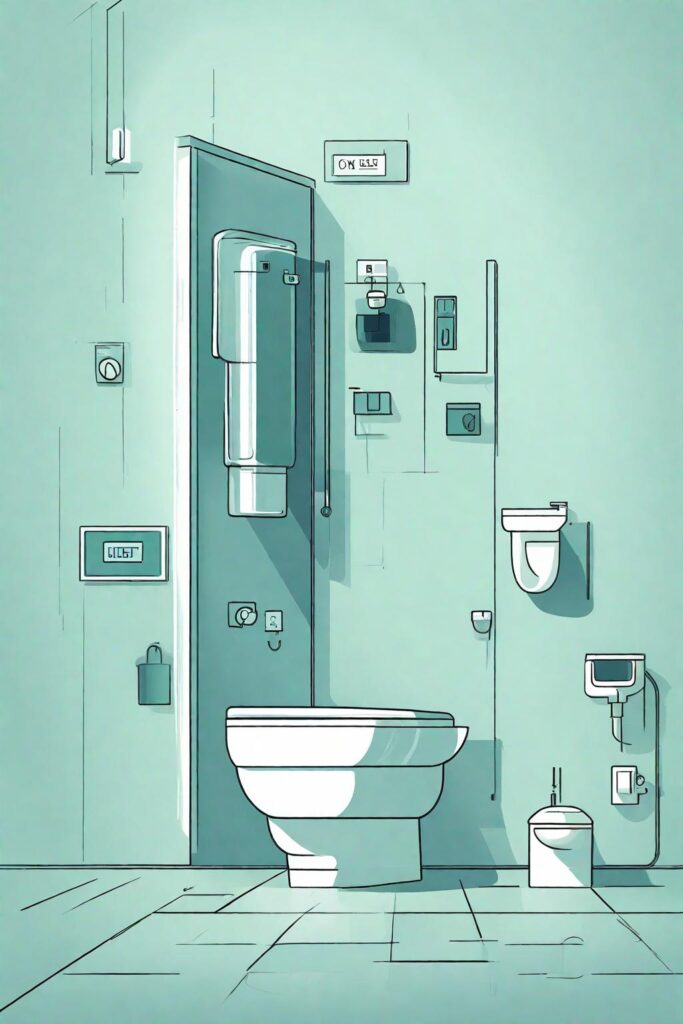
As an Amazon Associate, I earn from qualifying purchases.






